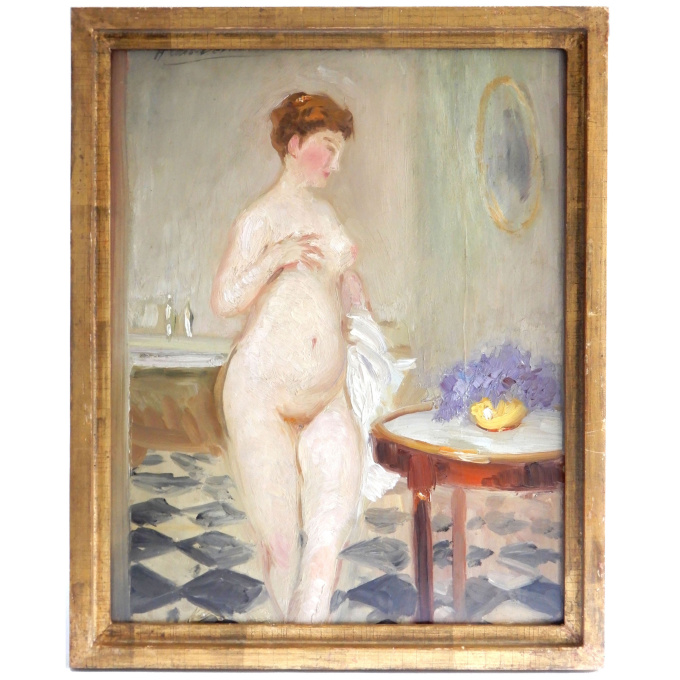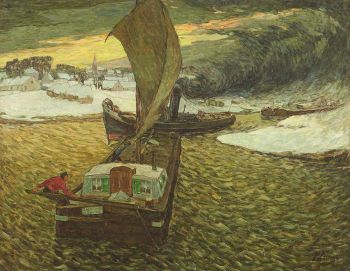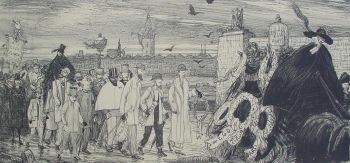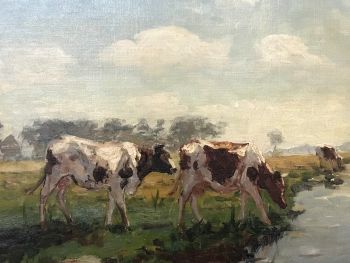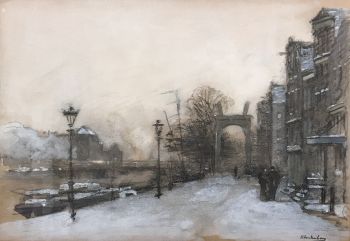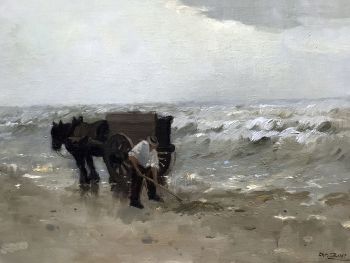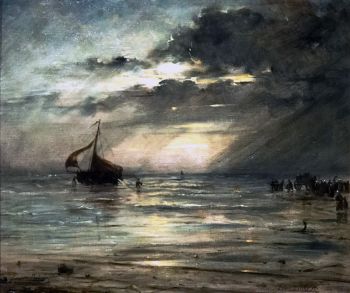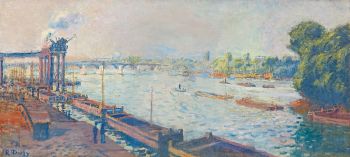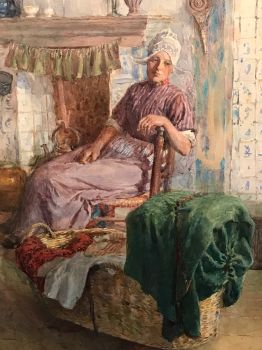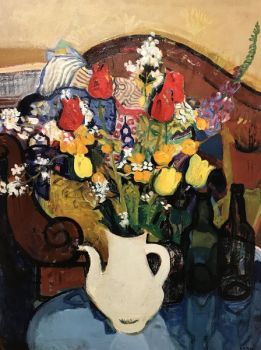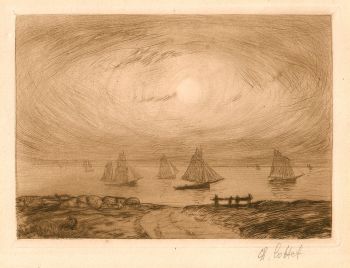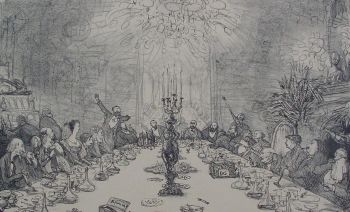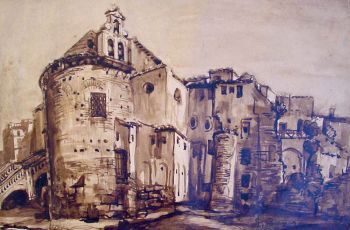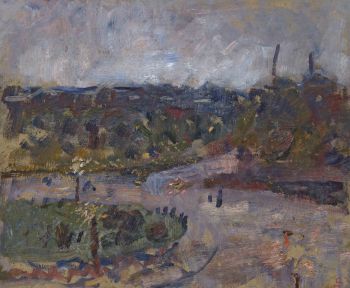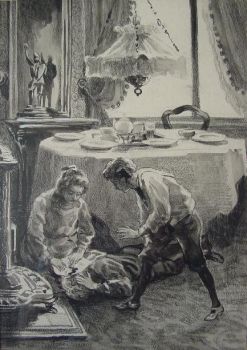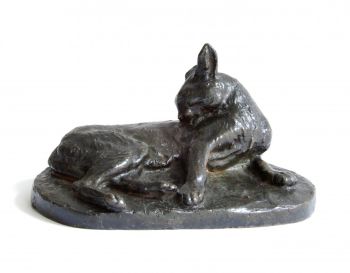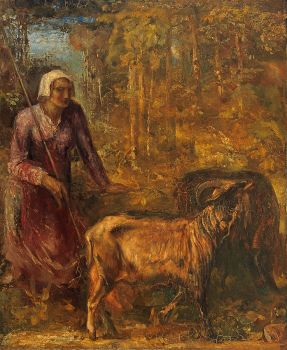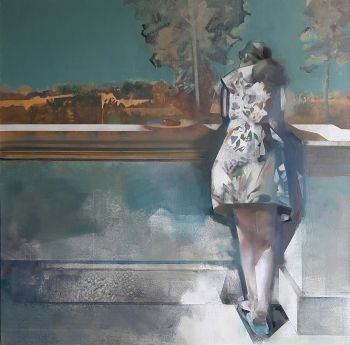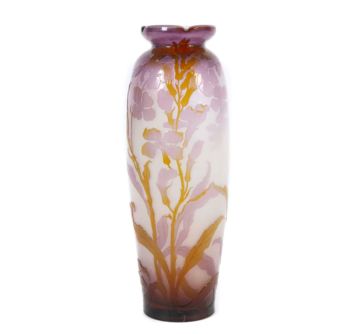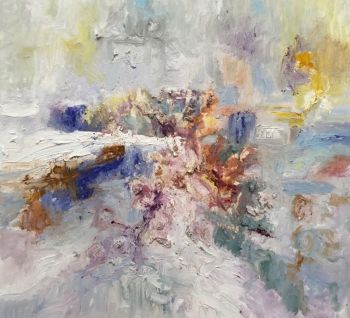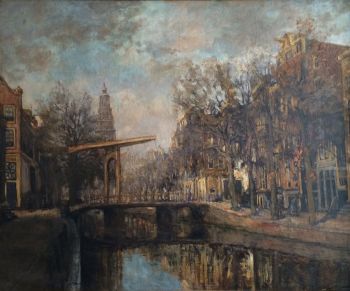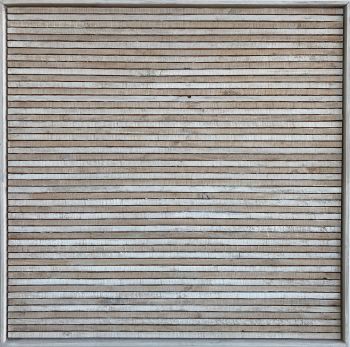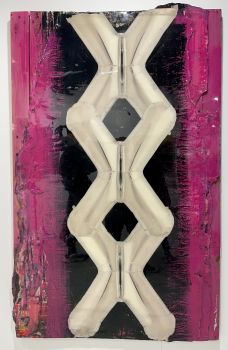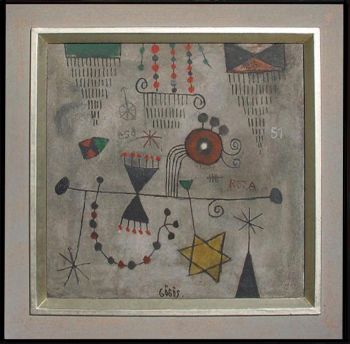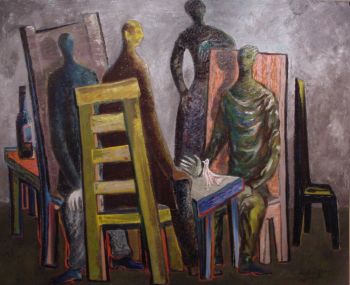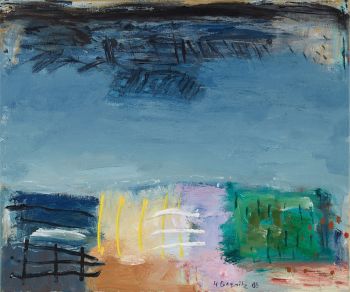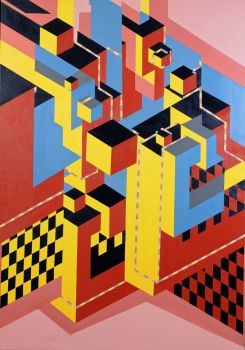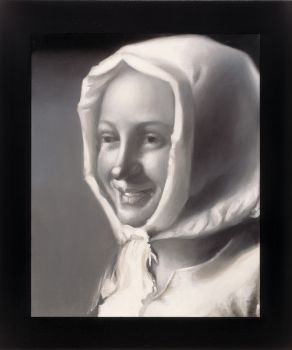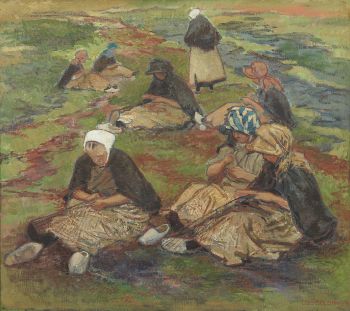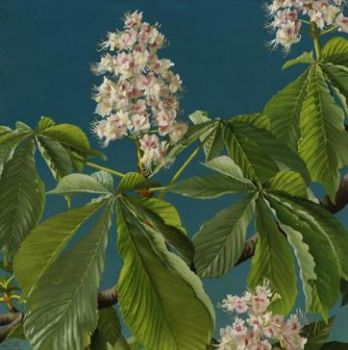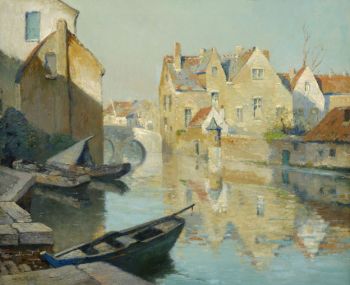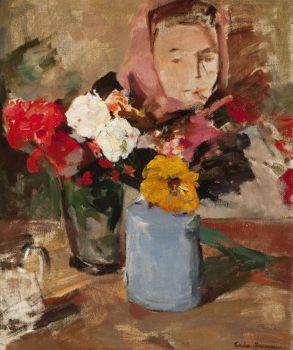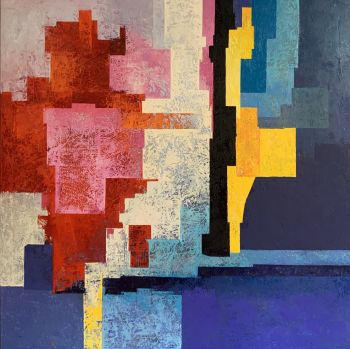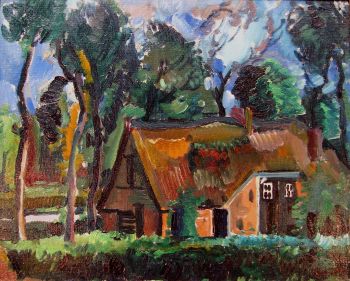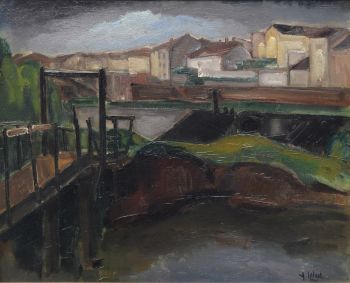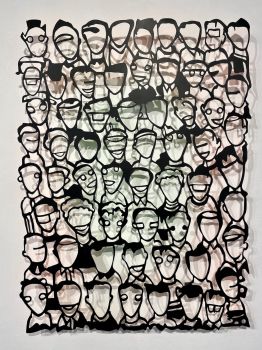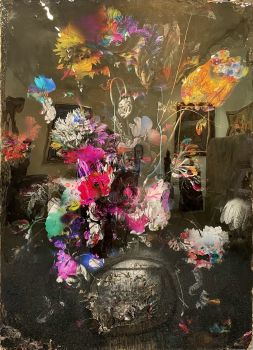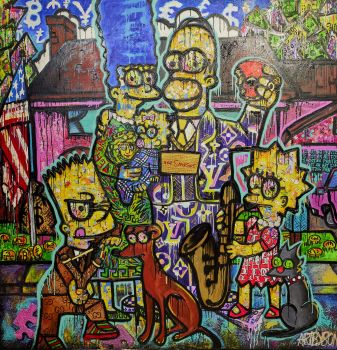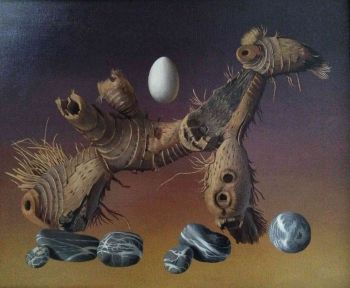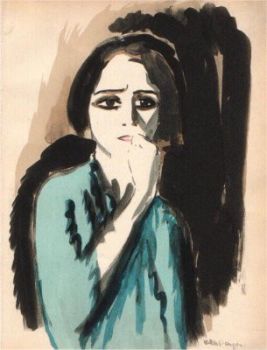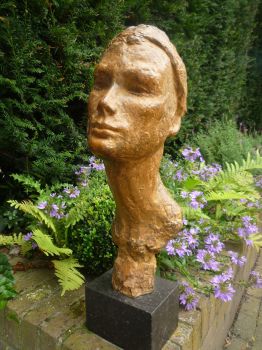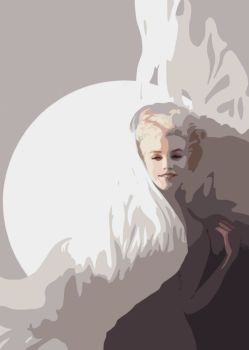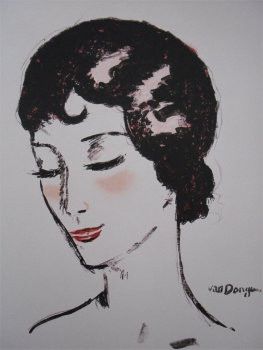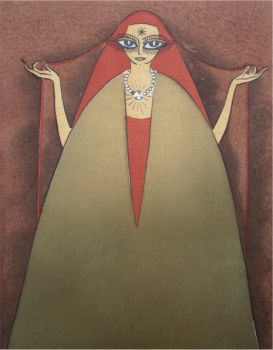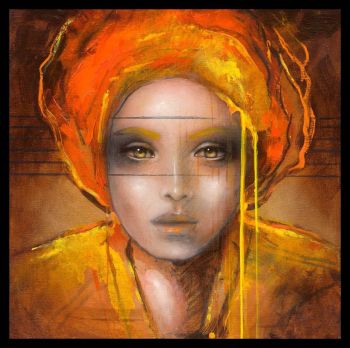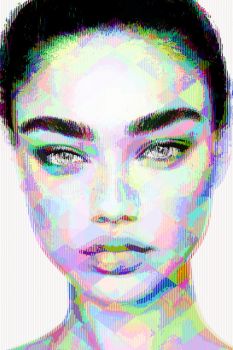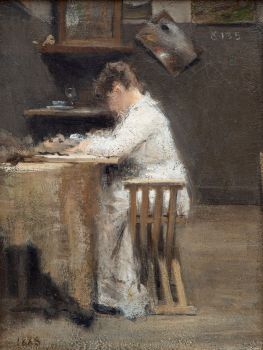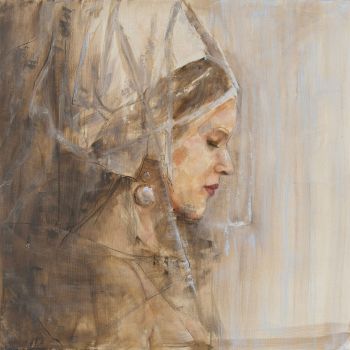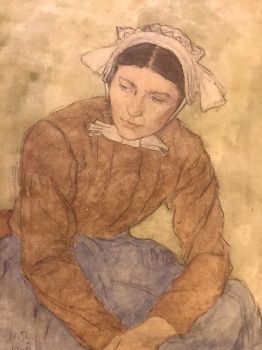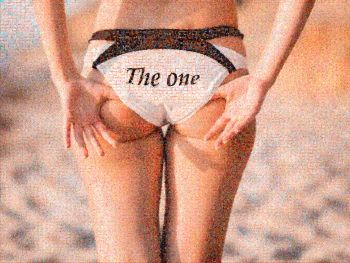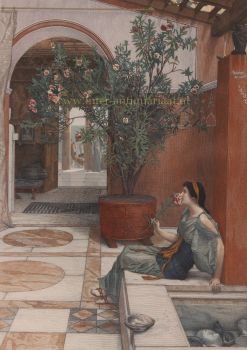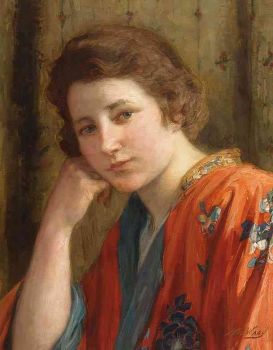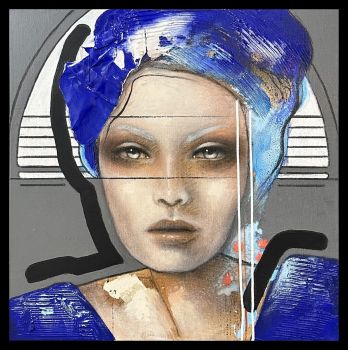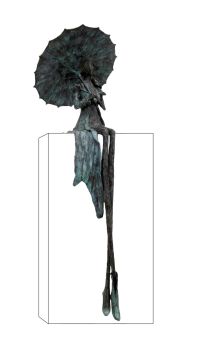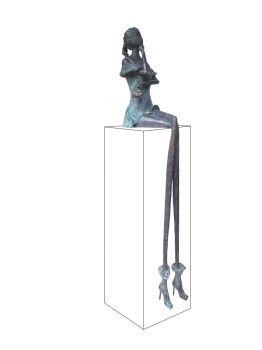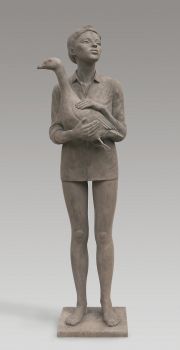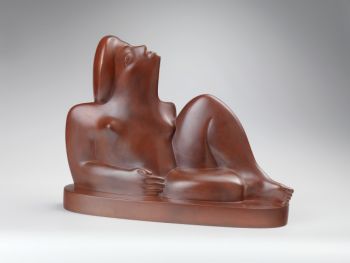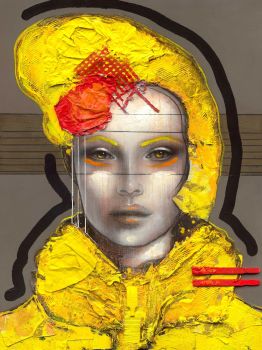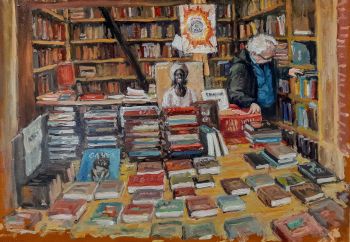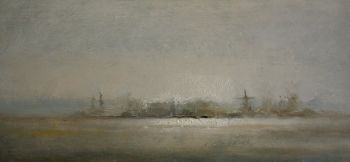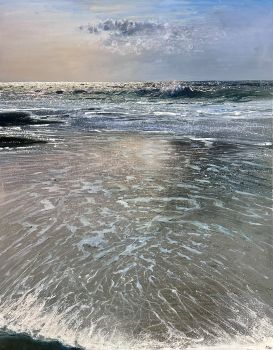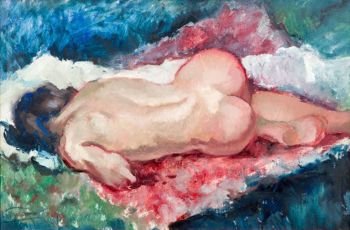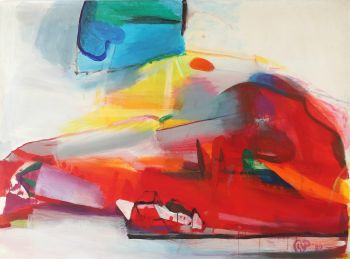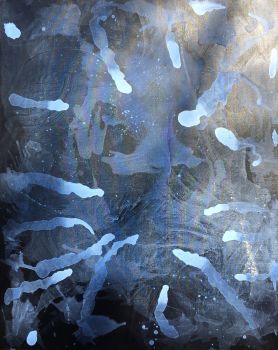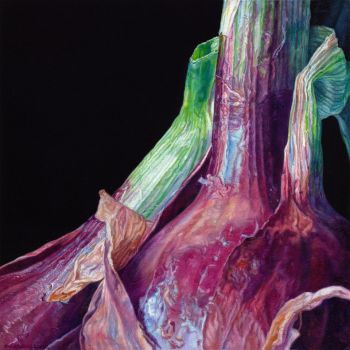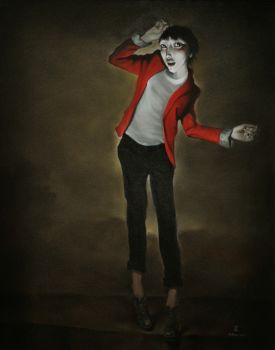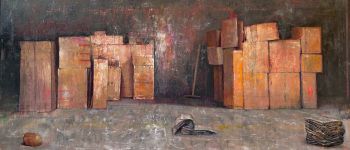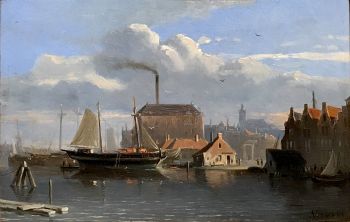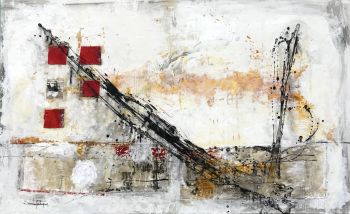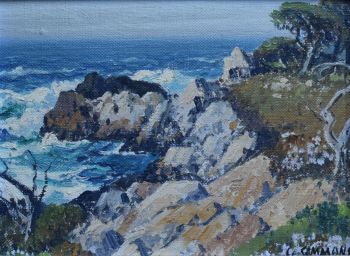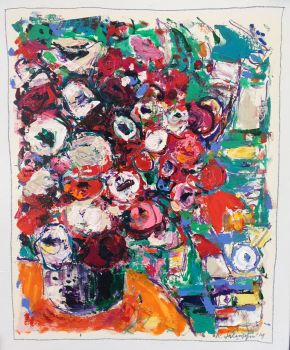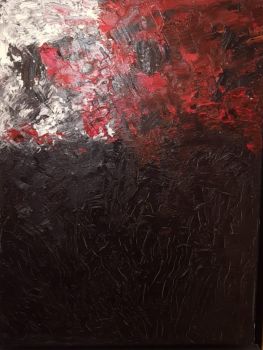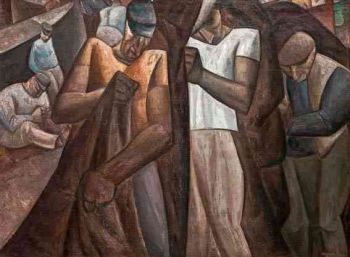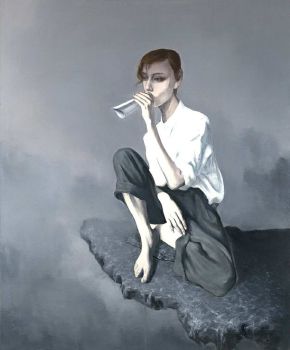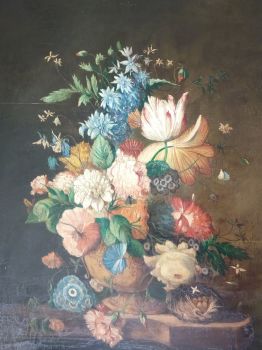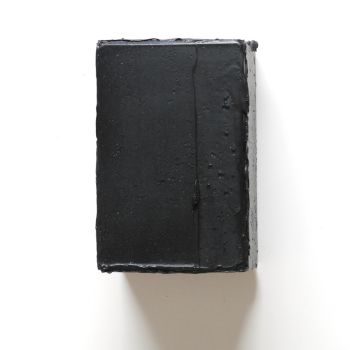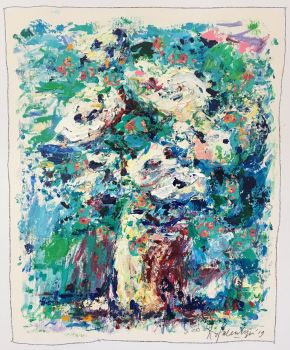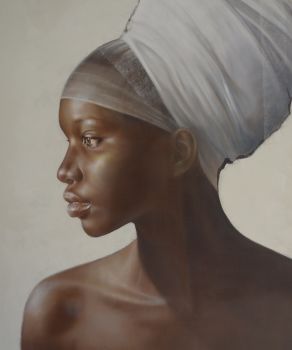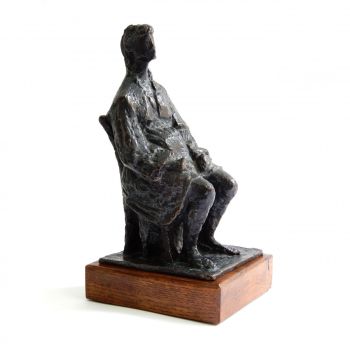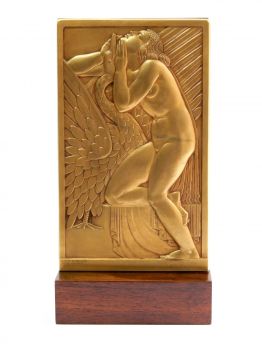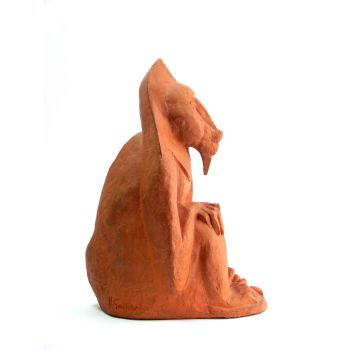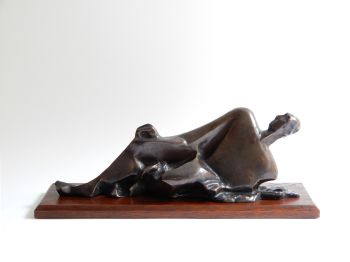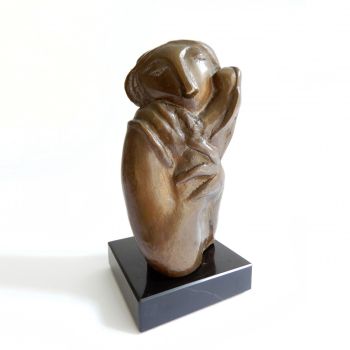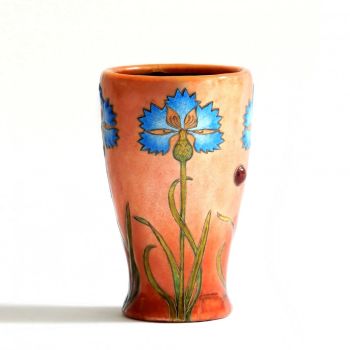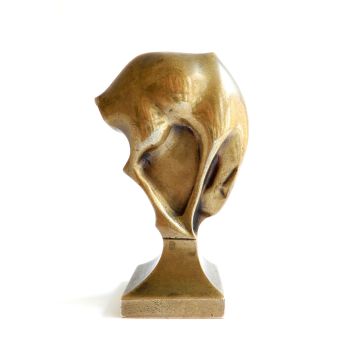'Nu a la toilette' 1900 - 1910
Henry Caro-Delvaille
Pittura a olioDipingere
44 ⨯ 36 cm
ConditionNear mint
Attualmente non disponibile tramite Gallerease
Dille Art
- A proposito di opere d'arteIntimate and lovely oil painting on panel (wood), depicting a woman who has just taken a bath. It is a domestic scene that Henry Caro-Delvaille wanted to capture. The style of painting is different, but the atmosphere is reminiscent of the work of Pierre Bonnard (1867-1947). They also exhibited together with the Group "Les Intimistes" in 1906.
This work was painted in the early 1900s and was part of the famous Sommaruga Collection in Milan.
It is signed top left with 'H. Carol Delvaille.
Biography:
Henry Caro-Delvaille (Bayonne, 1876 - Paris, 1926) was a painter of elegant interiors, figures and nudes, he was especially known as a painter of women, always elegant and often intimate.
He was also an engraver and decorator. After studying at the École des Beaux Arts in Bayonne, he continued his education at the École des Beaux-Arts in Paris, Léon Bonnet became his mentor.
He won his first medal at the Salon des Artistes Française in 1901, where he made his debut in 1899. From 1903 he was a member of La Société Nationale des Beaux-Arts.
In 1905 he won the grande Medaille d'Or at the Exposition Internationale in Munich. This brought him a lot of success, he received many assignments. As early as 1905, the French state purchased work from Henry Caro-Delville.
In 1906, Caro-Delvaille was one of the participants in the second exhibition of the "Groupe Intimistes" at the famous galerie Henry Graves in Paris.
Pierre Bonnard, Edouard Vuillard, René-Xavier Prinet and Etienne Moreau-Nélaton also participated in this exhibition. (Les Intimistes, Galerie Henry Graves, from February 14 to March 3, 1906.)
Both the public and art critics were very positive about Caro-Delvaille, the art critic Jean Valmy-Baysse wrote that he gave social events the charm of poetry. According to art critic Charles Morice, his work was "a representation of modern mondanité" (worldliness).
Maurice Denis sees in him an artist whom he compared to James Abbott McNeill Whistler (USA 1834-1903).
At the time, he presented him as one of the young promises of French painting
Henry Caro-Delvaille was represented by the important galleries such as Georges Bernheim Jeune in Paris and Nathan Wildenstein and René Gimpel in New York.
From 1917 to 1925 he also spent several years in the United States.
Henry Caro-Delvaille died in 1926 and is buried in Bayonne Jewish Cemetery.
His paintings are part of private and public collections in various museums in France, such as, for example, the National Museum of Modern Art, Center Pompidou, Musée des Beaux-Arts de la ville de Paris. But Princeton University Museum, USA or National Museum of Fine Arts, Beunos Aires in Argentina also have works by him in their collection.
Literature:
- Christine Gouzi, Henry Caro-Delvaille: peintre de la Belle Époque, de Paris à New York. Dijon, éditions Faton, 2016.
- Pierre de Lanux, « On the Revival of Applied Art. A conversation with Henry Caro-Delvaille », Arts & Decoration, avril 1922, vol. 17, p. 419.
- Henry Caro-Delvaille, "The Renaissance of Mural Decoration ", The Lotus Magazine, March 1913, vol. 4,
n°6, p. 253.
- Benezit Dictionnaire des Artistes, Gründ, Volume 3, p. 424.
Condition:
Good, There is an old restoration on the back of the panel. A professional restorer cleans the painting and gave it a new varnish. - A proposito di opere artista
Henry Caro-Delvaille, francese di origini spagnole, è stato un importante pittore della vita sociale del primo Novecento. Il suo vero nome era Delvaille ("de la Vallée" in spagnolo) ma ha firmato Caro-Delvaille perché sua madre, con la quale aveva uno stretto rapporto, si chiamava Caroline. Fin dall'infanzia, Henry Caro-Delvaille era curioso di arte, osservava ciò che lo circondava e disegnava. Sua madre, scrittrice e poetessa, fu la sua prima guida.
Dopo aver studiato dal 1895 al 1897 alla Scuola di Belle Arti di Bayonne, Henry Caro-Delvaille fu allievo di Léon Bonnat alla Scuola di Belle Arti di Parigi. Espone per la prima volta al Salon de la Société des artistes français di Parigi nel 1899. Diviene membro della Société nationale des beaux-arts nel 1903 e suo segretario nel 1904. Nel 1905 vince la grande medaglia d'oro al l'Esposizione Internazionale di Monaco di Baviera. Lo stesso anno l'amico Edmond Rostand gli affida la decorazione della sua villa a Cambo. Divenne poi noto come ritrattista e ricevette numerosi ordini. Fu nominato cavaliere della Legion d'Onore nel 1910. La sua pittura può essere paragonata a quella di Carolus Duran (1837-1917), famoso pittore della belle époque.
Henri Caro-Delvaille emigrò negli Stati Uniti nel 1913 e si stabilì a New York, orientandosi verso uno stile più Art Déco. Era una figura centrale nei circoli artistici, letterari e musicali su entrambe le sponde dell'Atlantico, da Parigi a New York. Gran parte del suo lavoro può essere trovato oggi attraverso l'Atlantico.
Sei interessato ad acquistare questa opera d'arte?
Artwork details
Related artworks
Johannes Christiaan Karel Klinkenberg
Cityscape Amsterdam1875 - 1925
Prezzo su richiestaGalerie Gabriëls
Emile Bernard
Sketch of the surroundings of Tonnerre1888 - 1941
Prezzo su richiestaKunsthandel Pygmalion
Jan Sluijters
Original illustration of Sluijters for the book: 'Laura's opstel'1881 - 1957
Prezzo su richiestaKunsthandel Pygmalion
1 - 4 / 24 A cura di
A cura diGallerease Magazine
Coba Ritsema
Two vases with flowers and a portrait1900 - 1950
Prezzo su richiestaKunsthandel Pygmalion
1 - 4 / 24- 1 - 4 / 24
Johannes van Dreght
Antique Dutch still life flowers in vase1740 - 1800
Prezzo su richiestaGallerease Selected
1 - 4 / 24- 1 - 4 / 12

